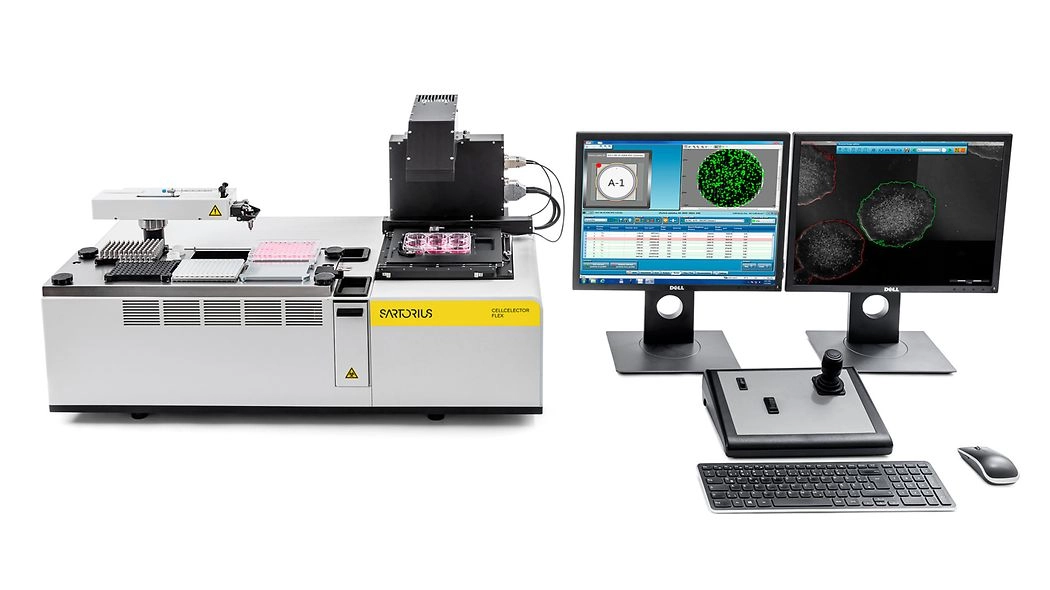
Instruments and Solutions to Drive Therapeutic Antibody Development: An Interactive Infographic

Molecule Development focuses on the initial identification, characterization, and optimization of antibodies or antibody derivatives. Various techniques are used to identify the molecular target and screen large libraries to select the most promising hits. These leads are then refined to improve therapeutic properties like affinity, specificity, and efficacy.
Cell Line Development aims to establish a stable and productive cell line that can reliably produce the optimized antibody. The best performing cell line is subsequently optimized and used to establish the cell bank which serves as the main production engine for therapeutic manufacturing.

Feb 21, 2025
Product News
Affordable Automation for Proteomics—Opentrons Introduces Flex Proteomics Workstation
Opentrons launches the Flex Proteomics Workstation, an affordable automation system for MS sample prep, making high-throughput proteomics accessible to more labs.

Feb 20, 2025
Product News
Thermo Scientific NanoDrop Ultra: Next-Gen UV-Vis Spectrophotometer and Fluorometer
Discover the Thermo Scientific NanoDrop Ultra, a UV-Vis spectrophotometer and fluorometer designed for high-precision nucleic acid analysis with minimal sample volume.

Feb 19, 2025
Popular Products, Product News
New Solutions Set to Redefine Syringe Pump Performance
Launching innovative new products and a valuable resource hub will enable Chemyx to expand the reach of syringe pump technology

Feb 18, 2025
Popular Products
Proactive Strategies for Laboratory Shaking Incubator Maintenance
An interview with Andrew Magno, Vice President of U.S. Sales, Service, and Marketing at INFORS HT

Feb 13, 2025
Product News
Waters Launches TA Instruments™ ElectroForce™ Apex 1 for Advanced Mechanical Testing
Discover the Waters ElectroForce Apex 1, a cutting-edge mechanical testing instrument with enhanced stroke range, automation, and speed for polymer and composite testing.

Feb 11, 2025
Product News
Chrom SST: The Ultimate Solution for Automated Chromatography System Suitability Testing
Streamline chromatography SST with Chrom SST—automated, accurate, and scalable software for peak performance and seamless integration in your lab.

Feb 10, 2025
Product News
CN Bio Unveils PhysioMimix® DILI Assay Kit: Human 24
CN Bio launches the PhysioMimix® DILI Assay Kit: Human 24, a next-gen Organ-on-a-Chip system delivering human-relevant hepatotoxicity insights for safer drug development.

Feb 05, 2025
Product News
Thermo Scientific™ Orion™ Pro Star Bench Meters
Discover the Thermo Scientific Orion Pro Star bench meter series, designed for precise electrochemistry analysis with multi-parameter support, touchscreen controls, and advanced data management.

Feb 04, 2025
Product News
High-Throughput Microwave Digestion with Multiwave 5001 & Multiwave 3001
Maximize lab throughput with Multiwave 5001 & 3001 microwave digestion systems—high-capacity, safe, and versatile solutions for advanced sample preparation.

Feb 03, 2025
Product News
Tecan Unveils Veya™: A Next-Generation Liquid Handling Platform
Tecan introduces Veya™, a next-gen liquid handling platform with AI automation, real-time insights, and regulatory compliance for enhanced lab efficiency.
